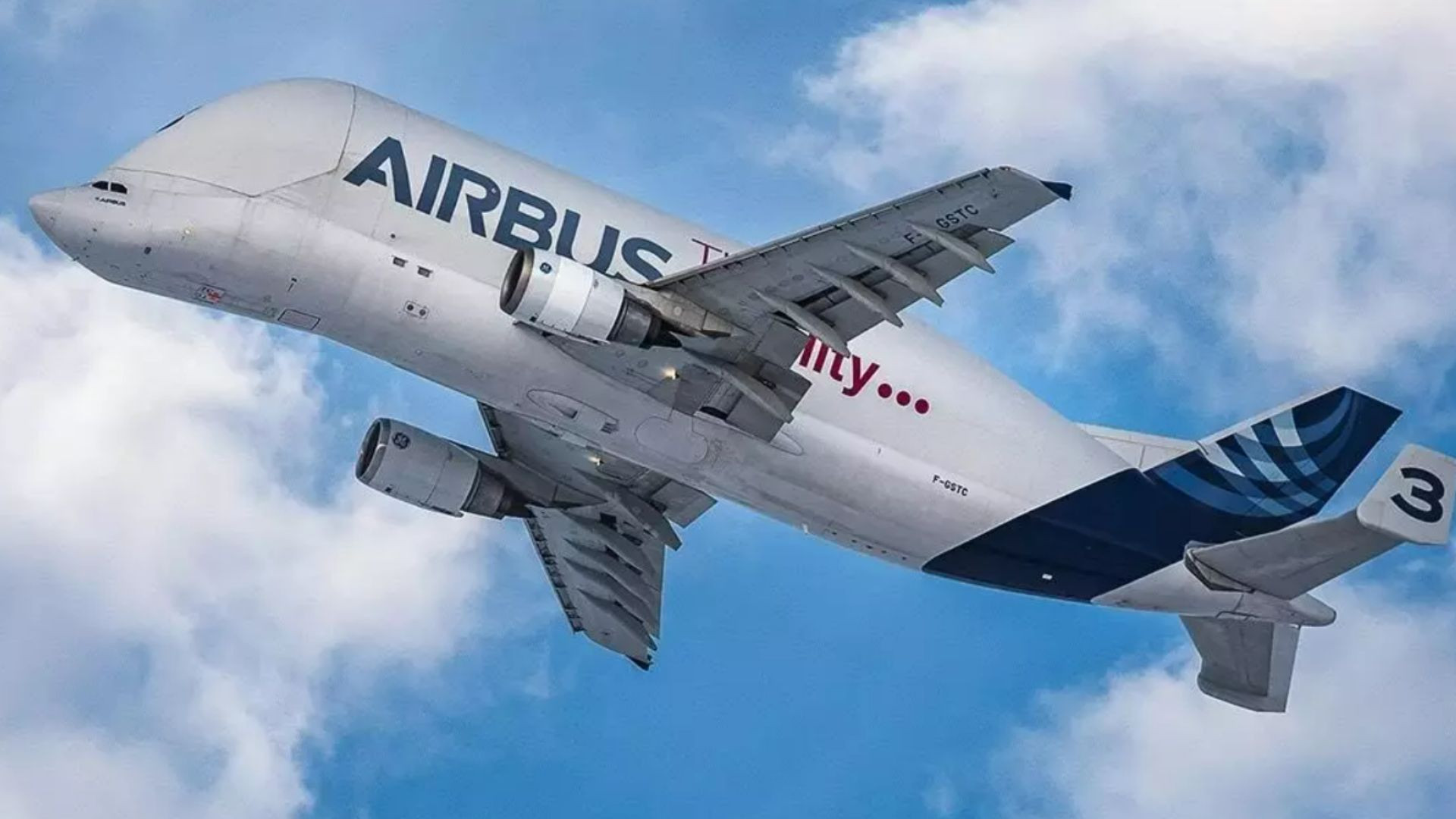Beluga: Tank-gobbling Airbus cargo plane to begin US operation in 2024
The BelugaST excels in versatility, boasting the world’s largest interior cross-section among transport aircraft for diverse market applications
Airbus is close on the heels of bringing its mammoth cargo aircraft Beluga to the US, to offer charter freight trips. In this regard, its subsidiary Airbus Beluga Transport has applied for a foreign air carrier permit (FACP) and permission to initiate charter cargo flights to the United States in February 2024.
The existing group of five Airbus A300-600ST Beluga (BelugaST) planes has been operational for two decades and has been serving to transport large aircraft parts between Airbus’s various production sites.
Last year, Airbus introduced a new service for global customers, focusing on transporting large freight. It marked the first time the five special BelugaST ‘Super-Transporter’ planes expanded their role beyond internal tasks. Now, it looks like the US clients will also soon be able to utilize this service for moving oversized cargo.
Airbus has replaced the old BelugaST planes with six new BelugaXLs based on a larger A330-200 platform. This change is happening to help Airbus increase its production of airplanes. The BelugaSTs can now enter a new phase of their operational life, as they still have many flight hours left before reaching their original service limits.

XL-sized
The Beluga is versatile and suitable for various market uses because it has the largest interior cross-section among transport aircraft worldwide. It can carry oversized cargo with dimensions of up to 7.1 meters in width and 6.7 meters in height, according to Airbus.
The broader cross-section of the Beluga will create opportunities for new markets and logistical options that wouldn’t be possible with other existing airborne transport methods. “Customers could consider in their future manufacturing process to make larger parts to be transported whole without prior disassembly. In the case of transporting helicopters, not having to dismantle them first really is a plus,” said Phillippe Sabo, Head of ATI Air Oversize Transport at Airbus, in a statement.

Airbus claims that the generous dimensions the Beluga can handle are appealing to industries like satellite manufacturing. Currently, the size of satellites is limited by existing transportation options. However, the Beluga will alleviate this limitation, allowing for future design and transport of larger satellites.
Another scenario is when an airline encounters an Aircraft-On-Ground (AOG) situation due to an on-wing engine issue. The Beluga can swiftly transport a complete engine-change kit to the airport, enabling the AOG team to replace the engine in just a few hours. This efficiency is possible because the Beluga can carry the engine and inlet in a fully assembled configuration. In contrast, other air transport methods would require partial engine dismantling, leading to around two days for reassembly and testing.
Airbus has also upgraded Belugas to incorporate a new-generation Flight Management System (FMS) with ADS-B. This enhancement will improve intercontinental navigational capabilities, according to the firm.
Quick turnaround
New loading methods and equipment are being developed to enhance the responsiveness and quick turnaround of the BelugaST for its international customers. An on-board cargo loader (OBCL) will autonomously load and unload payloads weighing up to 20 tons at airports lacking suitable platforms.
Stored inside the aircraft, the OBCL ensures adaptability for missions. For the heaviest cargo, a redesigned Outboard Platform (OP) is being created and strategically positioned at various global airports for swift transport before missions, according to Airbus.
Additionally, Airbus has developed the Multi-Purpose-Pallet (MPP) at its St Eloi and Nantes sites in France. Compatible with diverse payloads, the MPP is lifted about five meters above the apron and loaded through the Beluga’s nose using the OBCL or OP. Once loaded, the MPP securely connects to the Beluga’s floor attachment points. These innovations aim to maximize efficiency and cater to the diverse needs of international operations.
If the permission for operations comes through for Airbus Beluga, as reported by ch-aviation, the French freight carrier is slated to compete with US-made Boeing Dreamlifter aircraft in this category concerning oversized cargo.
 SHOW COMMENT ()
SHOW COMMENT ()










